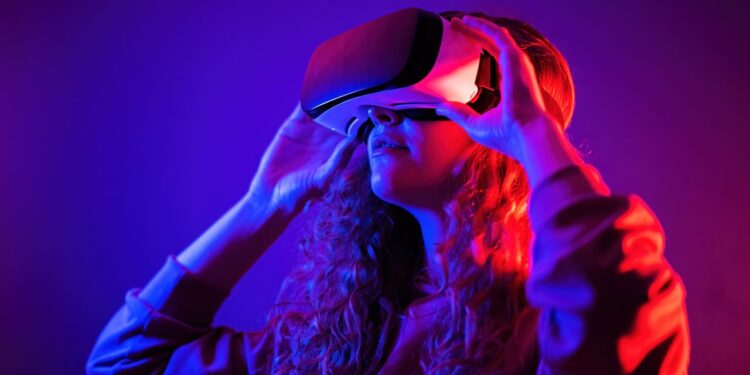Technology that helps enhance physical or mental capabilities such as virtual and augmented reality headsets, will likely alter the way the workforce operates in the future.
While the complete impact remains to be seen, a recent report published by Markets and Markets, states that the global human augmentation market is on a trajectory positioned for rapid growth. The industry’s valuation is estimated to soar from $253.6 billion in 2023 to an astounding $545.1 billion by 2028.
This surge is largely being attributed to the consumer market’s increasing adoption of wearables, including smart glasses, smart watches, and virtual reality/augmented reality headsets. While the initial growth will be felt in the gaming and entertainment industries, the workforce also stands to be impacted due to the high demand for remote and hybrid work environments.
According to the report, businesses are increasingly leveraging human augmentation technologies to increase workforce productivity and efficiency. By streamlining operations, minimizing errors, and enhancing output, these innovations stand to significantly reduce labor costs.
Augmented Tech can also help automate mundane tasks, much like generative AI tools do, freeing up employees to tackle more intricate or strategic roles. In sectors like retail and hospitality, the report states that augmented reality and wearable tech are revolutionizing customer experiences through innovative marketing strategies, navigation aids, and personalized services.
While key market drivers include rapid growth in both virtual reality and augmented reality technologies, another standout product reported in the human augmentation market is the use of an exoskeleton. This product type is expected to witness the highest compound annual growth rate during the forecasted period. They assist individuals with mobility challenges, cater to the needs of the aging population and workforce, bolster medical rehabilitation, and enhance workplace safety, according to the report.
In Asia Pacific markets, particularly within major economies like Japan, South Korea, and China, companies are spearheading technological innovation in this arena. With aging populations in several of these countries, the demand for human augmentation solutions to address age-related health challenges and mobility issues is escalating. Governments in the region are reported to be actively investing in R&D, adding to the fast innovation and market growth.
The human augmentation industry’s uphill trajectory suggests the potential for another transformative shift within the workforce — one that perhaps coincides with the advancement of AI technologies and their widespread adoption by organizations and businesses. As businesses and industries adjust to these new innovations, the workforce could witness more changes of roles, responsibilities, and capabilities. It’s possible that in the future, meetings held in virtual spaces like the Metaverse will be a common occurrence.


 Dr. Gleb Tsipursky – The Office Whisperer
Dr. Gleb Tsipursky – The Office Whisperer Nirit Cohen – WorkFutures
Nirit Cohen – WorkFutures Angela Howard – Culture Expert
Angela Howard – Culture Expert Drew Jones – Design & Innovation
Drew Jones – Design & Innovation Jonathan Price – CRE & Flex Expert
Jonathan Price – CRE & Flex Expert












